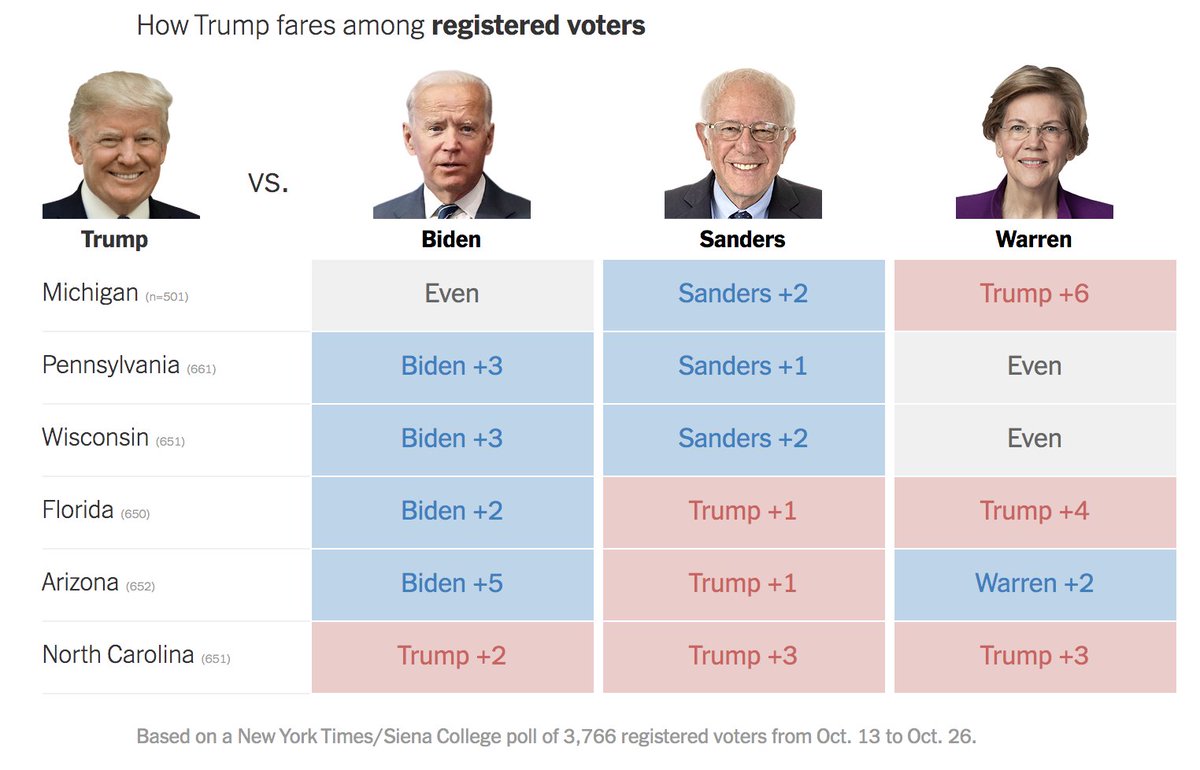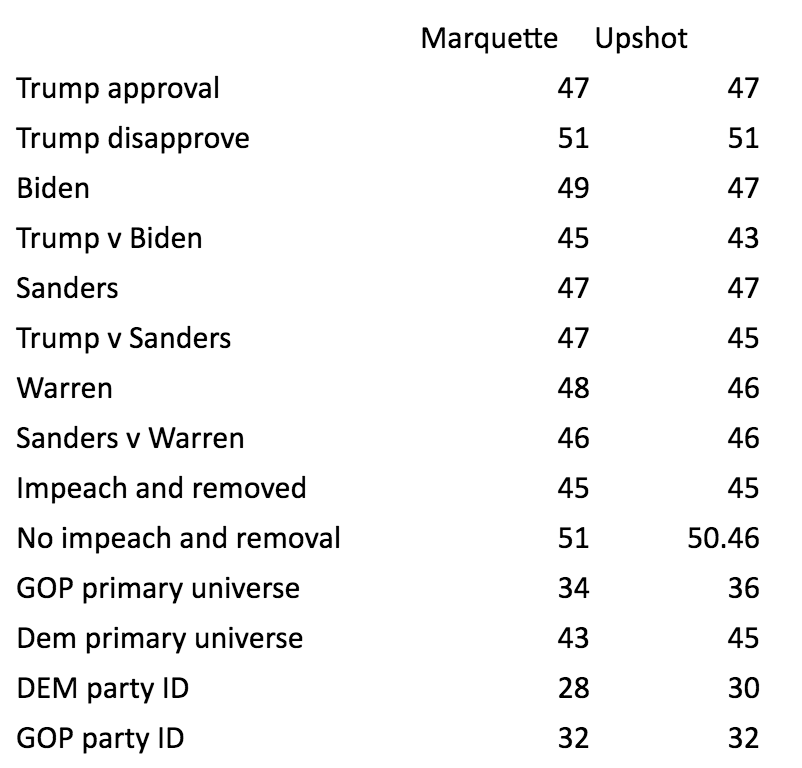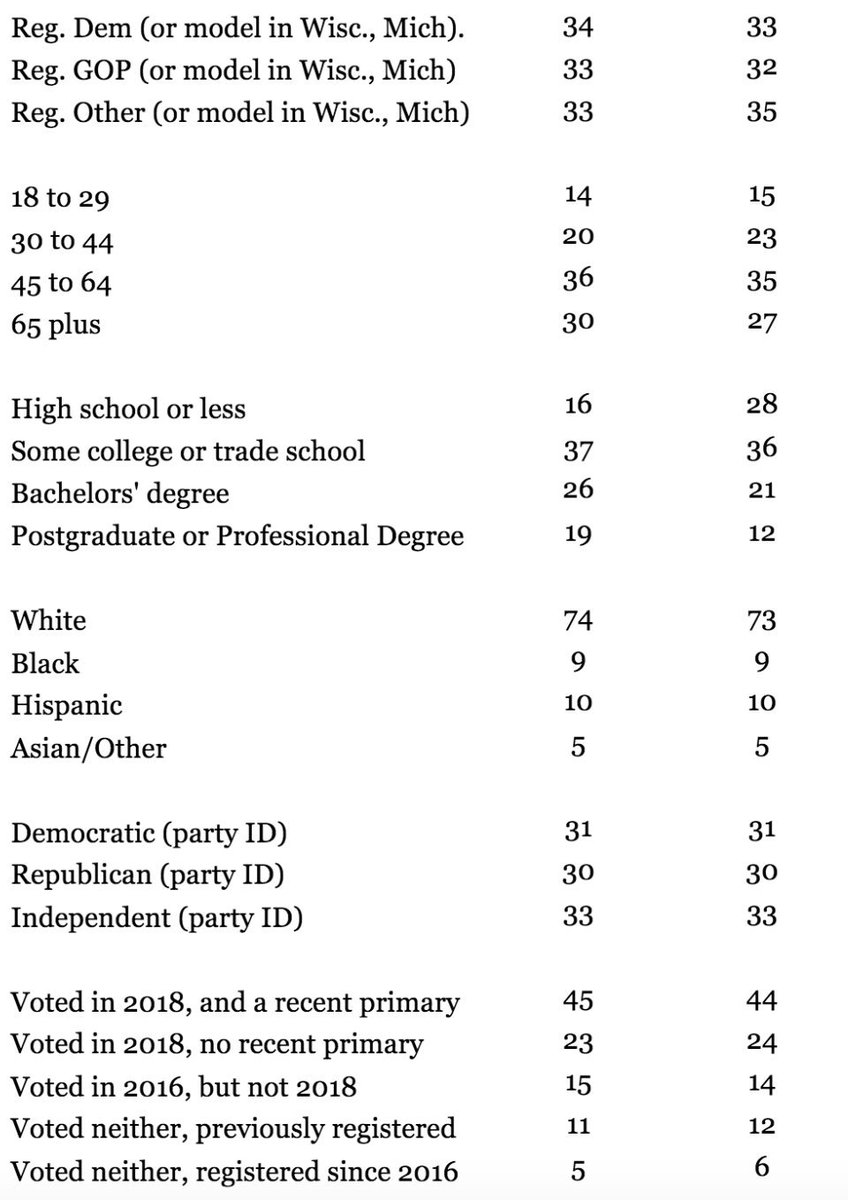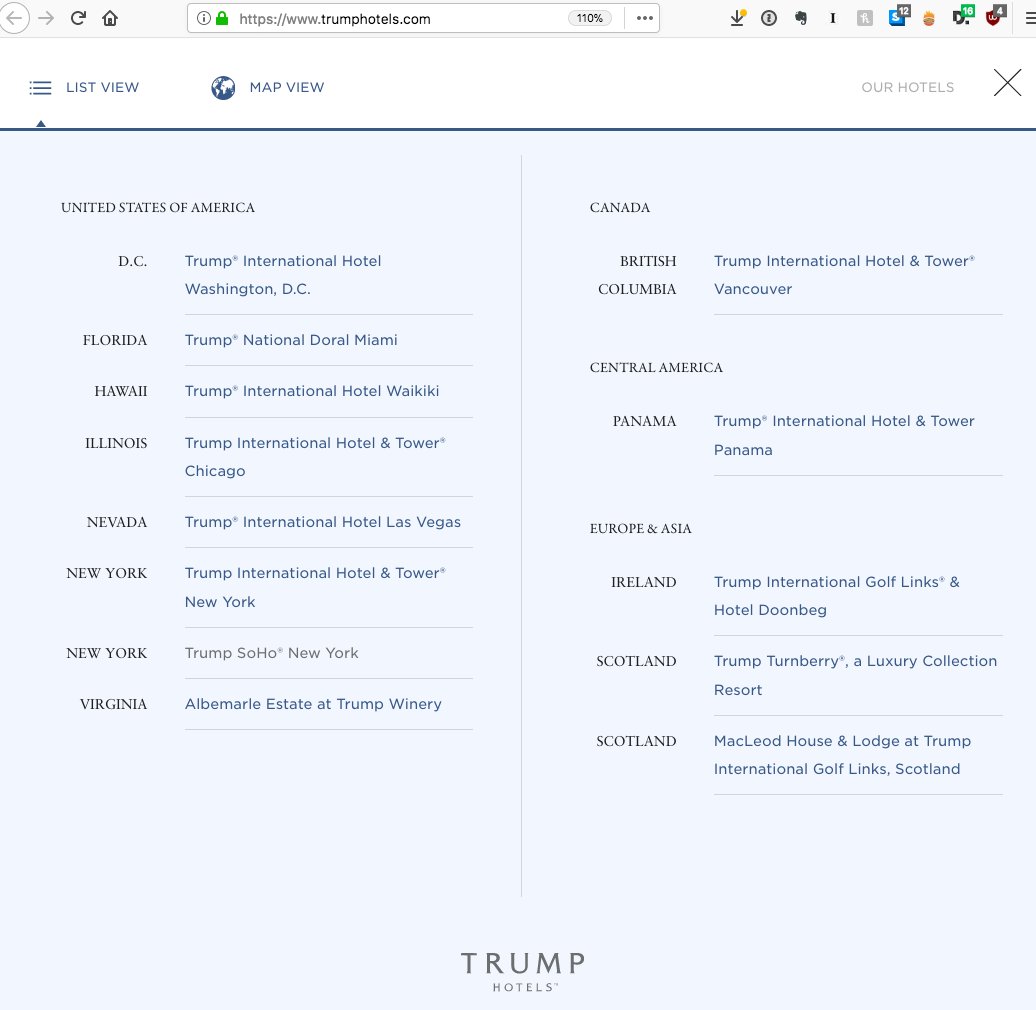Biden+2, Biden 46 to Trump 45
Even, Sanders 45, Trump 45
Trump+2, Trump 46, Warren 44
2016 result in these states was Trump+2, 48 to 46
nytimes.com/2019/11/04/ups…

Unlike most state polls, we're weighted by education
Unlike most national polls, we're weighted (and stratified for that matter) on party registration, so we have the right number of reg Dems/reg GOP in each state
github.com/ndcohn/battleg…
Take the Fox poll v. Biden yesterday :
White, no degree. Fox: 37/50, Upshot: 34/58
White, college. Fox: 50/42, Upshot: 50/41
Hispanic. Fox: 60/28, Upshot: 63/29
Black. Fox: 89/6, Upshot: 82/8
Trump+1, Trump 45, Biden 44
Trump+3, Trump 47, Sanders 44
Trump+4, Trump 45, Buttigieg 41
Trump +6, Trump 47, Warren 40
But Michigan was a real struggle. We cut our responses there to 500 (v 650 elsewhere), due to bad productivity. High design effect required weight changes. All described in method page.
The Trump voters who supported Democrats in the midterms say they'll back Trump by 2-1 margins
Trump leads all in Obama-Trump counties, precincts
68% of voters who back Biden but not Warren *either* say she's too far to the left, or say the women who run for president just aren't "likable"
IDK how much it matters. But like in some of the national polls, the horse race is Q40 after a bunch on impeachment and so on. Could be a factor?

Biden+5
Sanders+3
Warren+1
(I should note that we stratify our sample on party reg x region, which would tend to diminish the importance of weighting on party)

















